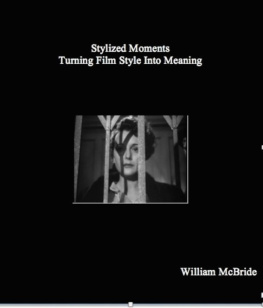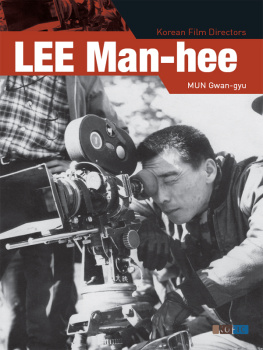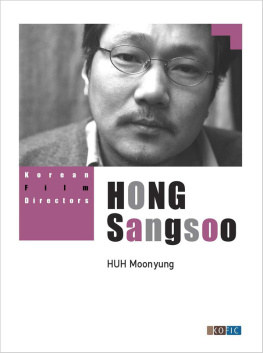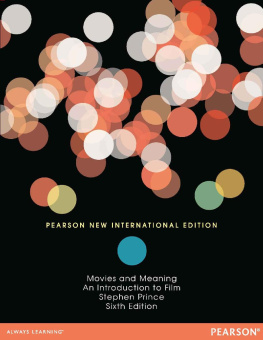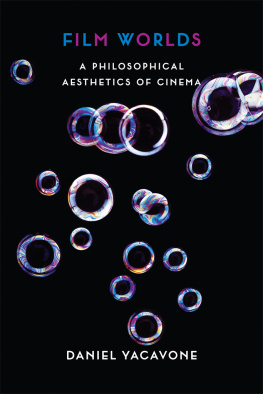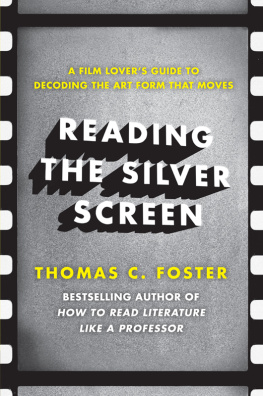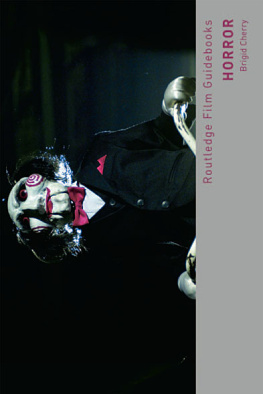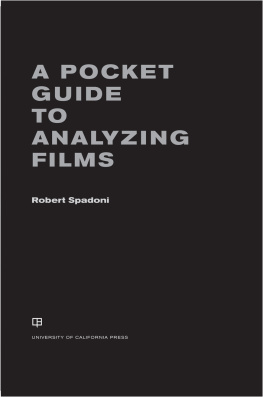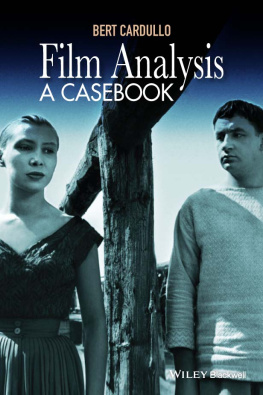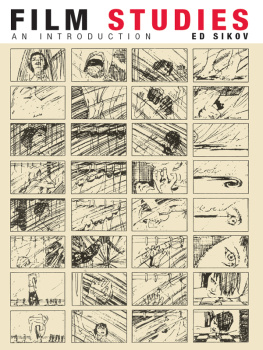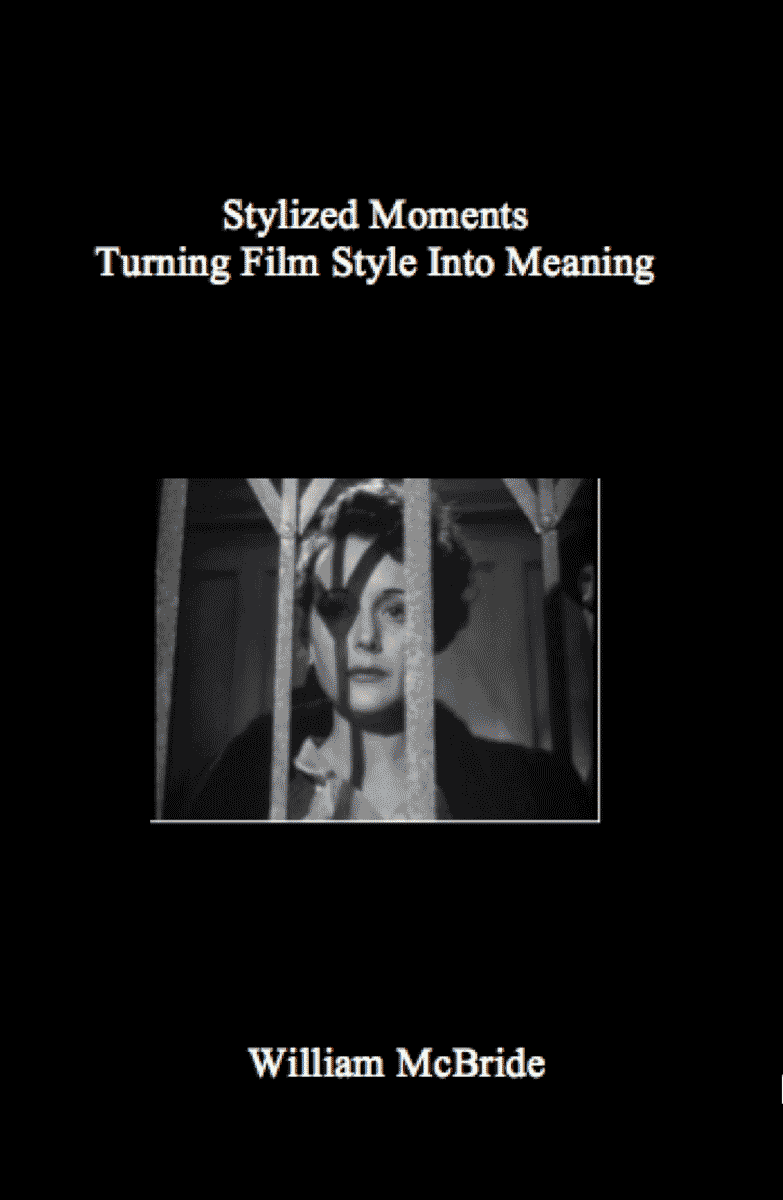
Stylized Moments: Turning Film Style IntoMeaning
William McBride
Copyright 2013 William McBride
Smashwords Edition
This ebook is licensed for your personal enjoymentonly. This ebook may not be re-sold or given away to other people.If you would like to share this book with another person, pleasepurchase an additional copy for each recipient. If youre readingthis book and did not purchase it (unless reading from the ReserveDesk), or it was not purchased for your use only, then pleasereturn to Smashwords.com and purchase your own copy. Thank you forrespecting the hard work of this author.
Electronic adaptation by www.StunningBooks.com

Contents
invention of photography
violent gaze
Heisenberg Principle
Hollywood & psychoanalysis
hermeneutics
storyboard
production design
shot/reverse shot
suture
German expressionism
key light
fill light
graphic match
insert shot
lap-dissolve
combining lap dissolve & graphic match
contiguity
faux raccord
diegetic/non-diegetic sound
crane shot
choker close-up
fourth wall
dramatic aside
montage
pan & tilt
global image patterns
zoom in/push in/track in/truck in & out
zoom
B-Movies
intentional fallacy
focus
intention
mistakes
jump cut
mise-en-abyme
structuralism
Caddyshack (Ramis1980)
Im Alright
the rules of decent society
comedic tone
cartoon & ethnic characters
pool or the pond
just say no & just say clock
colored boys!
unstylized & stylized slo-mo
the sincerest form of flattery
an improbable ending
Maltese Falcon (Huston1940/Hammett 1930)
pirates!
youve got brains! yes you have!
samuel spade, confidential investigator
you kill me!
dont bogart me
Stagecoach (Ford 1939/HilcoxStage to Lordsburg 1937)
monument valley
ugh!
social drama
I watched you with that baby
rear projection & the stunt double
aces & eights
the shoot-out
Notorious (Hitchcock 1946)
camera self reflexivity
hard boiled language
split point of view
rear projection
stylized props
morning after scene shot-by-shot analysis
canted angle
180-degree rotation
lap dissolve close-up global image pattern
long zoom
merging shadows
rapid montage
bedroom confession shot-by-shot analysis
Vertigo (Hitchcock 1958)
cue the maestro
repetition compulsion
musical sting
the vertigo shotthe stylized moment parexcellence
title sequence
the ever-widening circle
womb/tomb global image patterns
endings
stylized poses of unfreedom and death
narrative closure
the god shot
dreaming in color: a shot-by-shot analysis of thenightmare sequence
the arbitrariness of color analysis
filters
blue/green screen
POV shot
split perspective
authorial camera
Not I (Beckett 1972/Davies1975)
stage to screen
I know it when I see it
the use of force
extremity of human meat
Death of a Salesman (Miller1949/Schlondorff 1986)
square or rectangular
the vertigo shot & tomb-like global imagepattern
the American dialectical: christianity vs.capitalism
boston flashbacks
coming of age
one last kiss
trapped
fired!
free and clear
whats in a name?
chip off the old block
Whos Afraid of Virginia Woolf?(Albee 1962/Nichols 1966)
swerving to avoid a porcupine
unpacking a title
using art
spatial relationships
dragon lady
walpurgisnacht
violence! violence!
the languorous fall of the house of George
taking it outside
driving into a large tree
acting
Dutchman (Jones 1964/Harvey1966)
heaped in modern myth
bet you cant eat just one
my Christ! my Christ!
thank you for your support
the Flora Cameron gambit
cinematic deaths
chopsticks in crisis
Miss Julie(Strindberg 1888/Figgis1999)
the first shall be last
kill me too!you, who can slaughter an innocentbird!
soundtrack, distortion & split screen ballet
one countess in a big dark room/met a footman andher doom
ascending & descending dreams
Taxi Driver (Scorsese 1976)
copycat violence & high school shooters
art/life interpenetration
didactic art & aesthetic distance
impressionism
stylized dichotomous soundtrack
compromised closure
faux raccord
the cameo & the seduction
passenger watching silhouette shot-by-shot & theconnecting pan shot
the god shot as global image pattern
Scorseses American Bandstand
the pan to emptiness
process shot
jump cut double take
marine training as method acting
countercultural wars
intentional fallacy
Life Lessons (Scorsese 1989)
the aesthetic gaze
the iris effect
a whiter shade of Paulette
soundtrack
the lascivious artist
its a frame
there are two kinds of people in the world
how does It feel?
conquistador
mirror in the bathroom
i can do anything
russian roulette
cameos
bolero
Blue Velvet (Lynch 1986)
opening and closing montages
film noir inside a film noir
Chekhovs dictum
the ear of Denmark
garden hose and artery conceptually matched
industrial soundscapes
two primal scenes
booth and Lincoln
the voyeur caught in the act
slow motion or over cranking
shock cut/lightning mix
shifting tone
beneath the surface/various vegetation shots
stairs lead to knowledge and danger
three beer analysis
masochisms theatricality
pop songs turned upside down
authorial distance
the throwaway test
the tyranny of the ending
soft or shallow focus
rack focus
deep focus
two diseases
I began studying films in an unassuming way, Isuppose, at an early age as an avid viewer of the New York areaWOR-TVs Million Dollar Movie. In the 1960s the station wouldplay and replay a single film five nights a week (mostly RKOreleasesthe stations owner), providing me a pre-VHS/DVDopportunity to inexpensively view a film repeatedly at home. Sometitles were classics like Gone With The Windand Citizen Kane, while others were boyhoodfavorites such as The Al Jolson Story (Green1946) and the Japanese monster movie King Kongvs.Godzilla. What I most absorbed from this repeated viewingpractice, beyond an unschooled taste for some of the principles inWalter Benjamins Art in the Age of Mechanical Reproduction, wasa sense of the unstoppable, predictable unfolding of time in films(commercial interruptions became part of that flow), an inevitable,ritual-like clockwork whose dramatic principles I later came toidentify and admire in the work of Samuel Beckett. And I never lostmy pleasure for putting popular films right up there alongside theclassics. In fact to establish this populist principle of goingagainst the grain of University art film/foreign film studies, Ibegin each semester of my large lecture hall film class with aserious stylistic study of Harold Ramis 1980 cult comedy classic
Next page
